August 1 – Birding Kapihan: Candaba Marsh
Candaba Marsh: Things you may have missed joining too late in the game. Speaker Jon Villasper, using maps, relates the early birdwatching days in Candaba Marsh from its glory days with tens of thousands of birds to how the place gained popularity and its rapid spiral downwards to what it is at present. Senior birders, Mike Lu, Linda Gocon, Adri and Trinket Constantino shared their anecdotes as well.
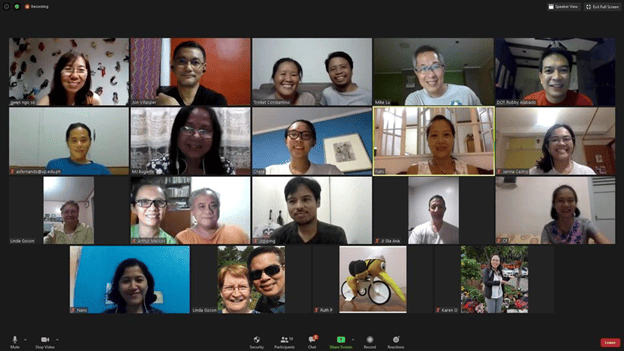
August 8 – Birding Kapihan: Biodiversity and Conservation in North Luzon
Merlijn van Weerd, one of the founders of the Mabuwaya Foundation presented an overview of the unique biodiversity of the Northern Sierra Madres and what his organization is doing to conserve the biodiversity together with local communities and local government. Special attention was given to the Philippine crocodile of which a small population survives in Isabela and to the Isabela Oriole, a very rare bird species that Merlijn helped to rediscover in 2003.
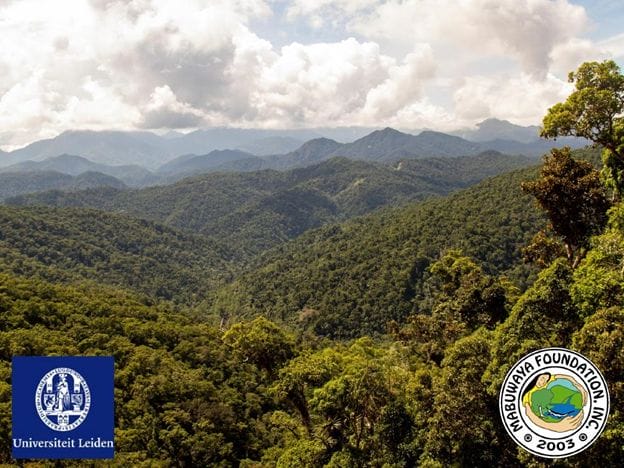
August 13 Stories for Backyard Birding in 13th Episode of “Stories for a Better Normal” Series
Members of the WBCP were guest speakers for the thirteenth episode of “Stories for a Better Normal: Pandemic and Climate Pathways,” with the topic on “Easy Backyard Birding,” where they shared their experiences and insights in bird watching, discuss urban bird biodiversity, and highlight the role of birds in our ecosystems, particularly as pollinators of plants. Topics covered on the show was a sneak preview to more extensive topics in the 13th Philippine Bird-tual Festival to be held 2 days later.
House Deputy Speaker and Antique Representative Loren Legarda hosted the episode, which was aired via Facebook Live!
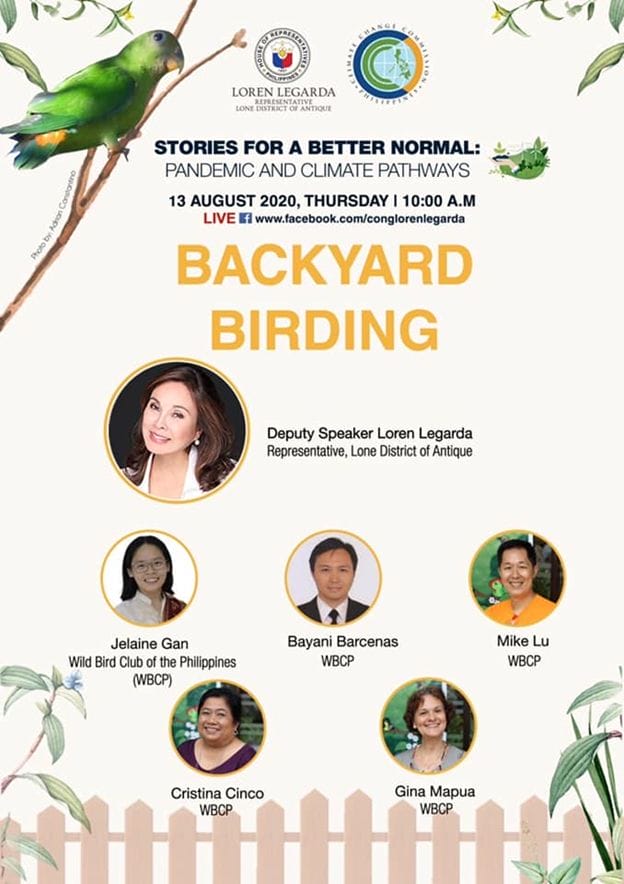
August 15 – 13th PHILIPPINE BIRD-TUAL FESTIVAL
With all birdwatching activities suspended due to the COVID quarantine, WBCP held a virtual bird festival to reach out to a wider global audience. Divided into 5 sessions, hosted by WBCP members the 13th Philippine Bird-tual festival was seen by over 6000 viewers. The sessions were organized according to the following themes: Birdwatching Basics, Urban Birdwatching Destinations, Children’s Hour, Urban Birdwatching Sites in Asia and Flagship Species Conservation Projects.

August 22 – Birding Kapihan: Danjugan Island
The Kapihan “escaped” to Danjugan Island for a nature and birding holiday. Dave Albao, Executive Director of the Philippine Reef and Rainforest Conservation Foundation, Inc. took the participants to a virtual tour of the island located in the Sulu Sea, off the municipality of Cauayan, Negros Occidental. On top of Danjugan Island’s “complete package” as an eco-tourism destination, Dave introduced the participants to some of the birds that make the famous island its home: White-bellied Sea-eagle, Tabon Scrubfowl, and Beach Thick-knee to name a few.
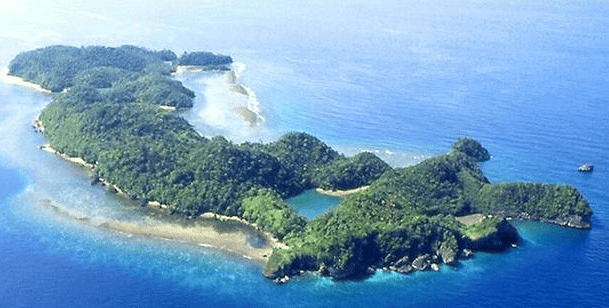
August 23 – 3rd Quarter Waterbird Monitoring @ LPPCHEA
Five WBCP members joined Rey Aguinaldo of the DENR-NCR to conduct a quarterly monitoring of waterbirds at the Las Pinas-Paranaque Wetland Park. The team started at the Bulungan/Fisherman’s Market at the north lagoon fronting Freedom Island, followed by the South Lagoon, the seaward side of Long Island and Freedom Island. Early migrants include Black-winged Stilt, Grey-tailed Tattler, Wood Sandpiper and resident species Black-crowned Night-Heron, Rufous Night-Heron and Collared Kingfisher.
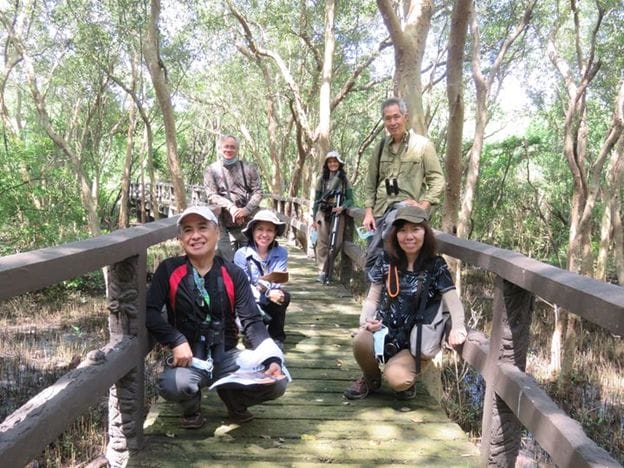
August 29 – Saturday Kapihan: How birding sites were discovered
How birding sites were discovered by Mike Lu discussed searching for birdwatching areas within the metropolis in the early days of the club. The greatest discovery with the highest number of species was the reclamation area in Pasay and Paranaque. In the early 2000s, when most places were still grasslands or mudflats, discovering bird species to add to the club’s database was the main factor most trips were held here. The construction of the Mall of Asia and eventually the casinos, obliterated all these wild areas. Fortunately, club records were used in the declaration of the Freedom Island and Long Island as the Las Pinas-Paranaque Critical Habitat and Ecotourism Area and eventually qualifying it as a Ramsar site.
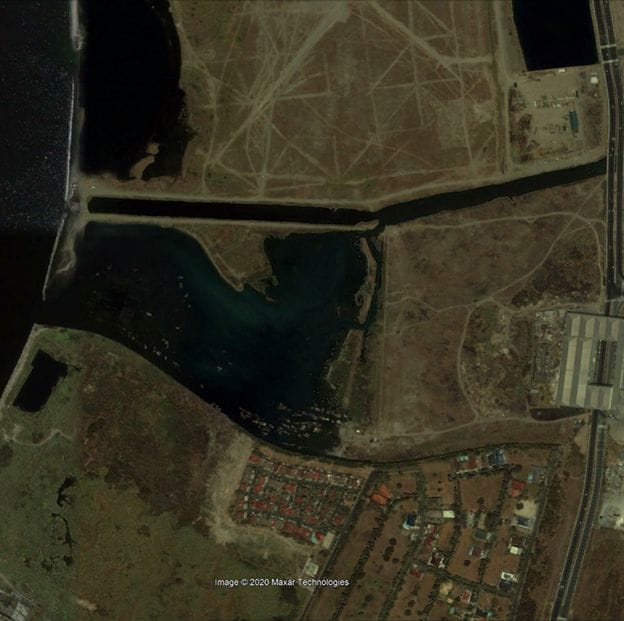

I bet the birds are quite happy about the quarantine, they get to enjoy their life with less human destruction and poaching in some cases.